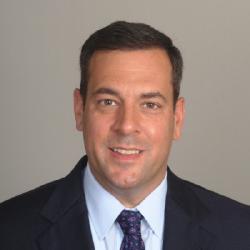Daryl Battaglia is SVP of Measurement Products and Strategy at Triton Digital — this interview has been lightly edited for style and readability
You’ll find an audio version of this interview in the Podcast Business Journal Spotlight podcast
Daryl Battaglia: Triton Digital has been in the digital audio and podcast space for over 15 years. We offer services across streaming audio as well as podcasting. In podcasting, we have a hosting platform called Omny Studio to help you manage and distribute your content. We have a full adtech stack to help publishers monetize their advertising, and we have measurement and analytics services to better understand the audience for podcasts - and that’s where I come in, leading our measurement strategy in products.
JC: So you released the US Podcast Report for 2023. That’s got data from Omny Studio in it, from Triton Podcast Metrics, from Demos+. What were the big findings?
DB: Podcast listening is growing. We computed a 12% growth in monthly podcast listeners over the last two years, and that came across all segments of the population - different age groups, male, female. We really saw a broadening of the audience. Podcasting over-indexes for a younger audience, and a little bit more male audience; but we saw more growth from the over 55 group in the United States and more growth from females. So we’re seeing that podcasting appeals to everyone and I think it’s really exciting for the future that the podcast audience can continue to grow, and there’s really no ceiling.
JC: Indeed, it’s super exciting. I wonder whether your report said anything about YouTube? It’s certainly all of the talk of the podcast industry over the last year.
DB: It did. We did a pretty in-depth comparison of YouTube and Apple Podcasts, and Spotify as well. What we saw is that YouTube is the number one platform that people say they use the most to consume podcasts. 33.5% of monthly podcast listeners said they use YouTube the most, and that has been growing. 47% of their listeners said they started consuming podcasts in the last year, so a lot of the new listeners are coming from YouTube. But we also saw a lot of differences in the demographics of the audience for YouTube as compared to Apple Podcasts and Spotify.
Really all of those platforms are younger than the general population. However, we saw that Spotify was the youngest, whereas YouTube was a little bit older. We saw Apple Podcasts was more female, while YouTube was more male. Differences in income as well. Apple Podcast’s audience on average was a higher income. So there are certainly differences amongst those platforms which were interesting to learn more about.
JC: The other two bits that I saw which I found interesting - firstly, the top shows by purchase intent. So if, for example, you want to reach shows listened to by people who are interested in switching their wireless provider, then apparently Wow in the World, or Fantasy Football Today are two big shows for that. This is really focused information - useful for for advertisers as well?
DB: Right. With Podcast Metrics Demos+, we’re able to understand the profile of the audience across podcasts of all sizes. So age and gender, other demographic insights, their purchase behaviors and intent, their political affiliation, their other media usage… so there’s a wide variety of purchase intent data; and different audience segments are important for different advertisers. If you are a wireless provider, you definitely want to advertise in shows that will do a good job of reaching people who are in the market to switch wireless providers. And in the report, first of all, we highlighted a few examples of different genres at the genre level, but within our our ranker of the top 100 shows for the year, we also highlighted, for different audience segments and different purchase intents and demographics, what were the top three shows that over-index the most for those segments, or would reach that audience most efficiently.
JC: Particularly helpful for an election year.
DB: It’s not surprising, of course, that different types of podcasts that have political content are going to be geared towards a certain political affiliation. That part’s not surprising, but it provides that insight for podcasts of all genres and definitely helps with political candidates and their advertising campaigns, and determining what podcasts could be a fit for them.
JC: What do you think that the US Podcast Report tells the podcast industry? What should we take away from it?
DB: Better insight into who the audience is, and how it differs across genres, across shows, across platforms. Spotify can provide it for their audience to a certain extent - maybe not to the same level of depth - but there’s been a gap for the industry in really understanding who the audience is and how it differs across the whole landscape. So, we can shed insight into that, and we provide this type of data to our clients at the individual show level or for any aggregation of shows as well.
JC: It’s really good to talk to my friends at Triton Digital. Thank you so much for your time today.
DB: Thank you, James, appreciate it.
